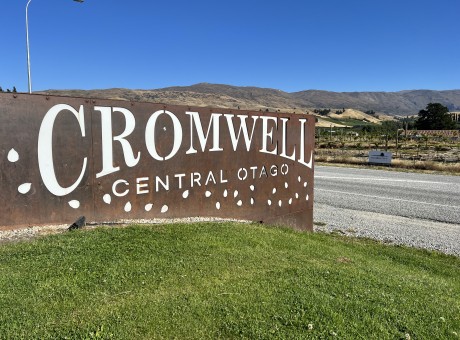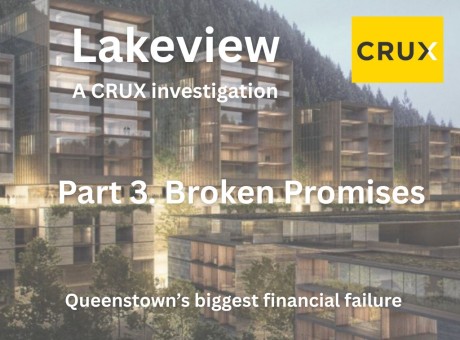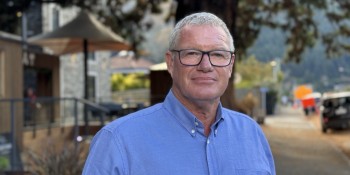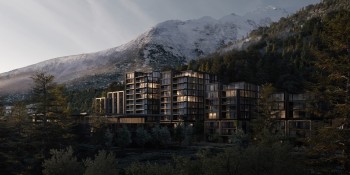Council defends planning process while Hawea residents attack

Crux published a story yesterday highlighting the cost and complexities surrounding the QLDC's current round of community consultation over a Spatial Plan, while at the same time seeking community feedback on the District Plan and exploratory meetings around a Masterplan for Ladies Mile. QLDC has issued the following response that we publish in full - followed by a letter sent today from the Hawea Community Association to Mayor Jim Boult that throws up further serious question marks over the entire planning consultation process.
We would note with regard to the QLDC response below that a number of QLDC and CODC Masterplans have been produced by Arrowtown consultants Rationale at a cost of around $800,000 each - so paying Rationale $80,000 to find out if another Masterplan is needed for Ladies Mile seems something of a potential conflict of interest.
QLDC response to Crux "Planning for Growth" article. Ian Bayliss, QLDC Planning Policy Manager.
"The Spatial Plan is a directive from Central Government and is a requirement for high growth councils like ours. This Plan will set out the long-term direction for where and how we live, work, travel, play and visit.
It will be used to inform future district plans, masterplans and other big decisions, so this early round of engagement is to understand how the community wants growth to be managed.
Almost all the early work on the Spatial Plan has been staff and partner driven, with next to no input from consultants. The more recent work has been all about community and stakeholder engagement: again, there has been only minimal input from consultants.
The Ladies Mile early stakeholder meetings are part of a separate development process which is not part of the Spatial Plan development programme, in the same way as the Frankton and Queenstown Masterplans have been discreet developments. These have been taking place to understand if there is appetite for a Ladies Mile masterplan to address current challenges in this location (such as traffic and a lack of services for the local community). This process is still in the exploratory phase.
They have come about following the Councillors’ rejection of the Ladies Mile SHA proposals in May 2019 and the Council resolution for QLDC to carry out a proactive planning approach for an integrated plan for development of the area, confirmed at the 30 May Council meeting."
Letter sent today (November 27) to Mayor Jim Boult from the Hawea Community Assocaition.
27th November 2019
Mayor Jim Boult
QLDC Councilors
Wanaka Community Board Members,
RE: Feedback regarding Spatial Plan Workshops_____________________________________________
There is strong concern amongst residents that in recent years, although QLDC consultation exercises have taken place, the overall view is that Council does not listen to Hawea despite consistent messaging from the community. So called consultation appears to be more of a Council box-ticking exercise designed to cement in Council agendas, with very little apparent respect for community input.
Hawea has always enjoyed an active and engaged community however, over the last week I have been informed by a number of community stalwarts that they would not be rearranging their diaries on this occasion to attend “yet another workshop where we will would be ignored”.
This frustration was evident in the very low turn out of Hawea residents to the Spatial Planning workshop last night.
I have now personally attended both the Spatial Plan Stakeholder Workshop in Wanaka on the 20th of November and the Community Workshop held last night on the 25th of November in Hawea.
I appreciate the workshops were run in differing formats due to the difference of time available however, during the Stakeholder workshop, the third Exercise with the large table maps and building blocks, was easily the most visually insightful as to the intention to show what growth might look like in 30 years’ time. It is therefore disappointing that this, of all the exercises, was not the one that should appear at all the community workshops.
On the 20th of November there were three exercises to complete and I was sent to this workshop with a mandate that was discussed at our regular committee meeting on the evening before, 19th November.
1. Spatial outcomes - What are the critical success factors? (Hawea perspective)
oInfrastructure keeps pace with growth (toilets that flush and don't end up in the river, roads, footpaths etc)
oDefinitive boundary
oAction/zoned greenbelt
oNo massive commercial precinct
oPublic transport
oHappy community
oThat climate change is a driver in decisions / Economic growth is not the driver oAirport - No Jets
-
Urban Areas - Where are the growth dependencies across the Valley? (Hawea perspective) oThree Parks Wanaka
oInfrastructure
-
Priority Places - How could each place grow and what are their roles? (Hawea perspective)
oTo increase and create a range of housing options for the next 30 years of growth which we can achieve by accepting the re-zoning from "settlement" to "low density" and filling in the existing Urban Growth Boundary.
I was very uncomfortable with the third exercise which I understood and observed as follows;
-
On this map, Wanaka, Lake Hawea, the SHA, Albert Town and Luggate had already been coloured "yellow" which was I was told was to indicate it was zoned Low Density. This is totally unacceptable to the Hawea community.
-
This exercise required each group to take "housing blocks" that represented growth over the next 30 years and came in 3 sizes, Low Density, Medium Density and High Density. Groups were then required to apply these blocks to the map based on the areas that they felt were appropriate for further growth however, what criteria is this based on? Whom prepared this information?
-
No environmental impact information or, soil maps were available as part of this exercise.
-
If a yellow housing population block was placed on an already identified yellow spot, another
block would have to be added to the map because Low Density areas were "already included in
the calculations" and we had to consider 30 years forward.
-
Red blocks indicated different retail formats, light retail model etc up to large shopping precinct.
Purple and blue blocks were services, schools, recreational etc.
-
I pointed out that the re-zoning of Lake Hawea in the existing UGB already allowed for 30 years
growth and therefore, no further housing blocks were required in Hawea, as re-zoning to Low Density would enable us to meet our obligations for 30 years growth. As I had been sent with a mandate, I was not comfortable compromising on that position however, I was told that it was “ok” for me to have a "personal opinion" for the purposes of this exercise. (This is also unacceptable. I personally do not think that is appropriate when I have been sent as a representative for a specific community.)
-
It was agreed that some services would be beneficial to Hawea given we had already shown our indication to accept housing growth with our community submission for the PDP. Services were added to the map in order to support this community’s acceptance of growth.
-
I was not comfortable commenting on any other residential area as I wish to respect their community wishes and believe their input about community desires and requirements should have more influence than mine.
-
This exercise was the most visually insightful as to how people, particularly outside of Hawea, thought our area might develop however, maps varied wildly from table to table. Table 2, which included the Universal Development representative, suggested development almost halfway to the Domain and, considerable development in Hawea Flat and it was suggested that lifestyle blocks were no longer viable in the district as they ate up valuable land that could be utilised for other purposes. People representing other groups or, interests seemed to feel that Hawea needed to grow if we wanted any kind of services.
-
Table1againshowedconsiderabledevelopmentinadditiontothealreadymarkedLowDensity Lake Hawea and again much of the justification seemed to be that in order to justify services in the area, we needed to have a larger population.
Conclusions:
-
The exclusion of this pivotal and visually informative third exercise from the shorter community workshops, creates an inconsistency with the process as to who provides input via the various channels. To date, the process has not been made transparent to the community. We do not have visibility of the full process for this consultation phase of the Spatial Plan. We do not know which “inputs” are being considered or, the “weighting” that will be given to the differing exercises.
-
It appears the outcome of the third exercise in the Stakeholder workshop can be influenced by those that may have a commercial, or other, conflicts of interest.
-
During this exercise, the outcome suggested a 2:1 ratio in favour of considerable growth and expansion in Hawea despite those two tables having no significant input from the Hawea community.
-
This exercise appeared to provide a loophole for small community voices to be drowned out by the “district” and “good intentions”.
-
During both workshops it was stated that a major challenge for the Council is that most of the resources required for growth in the district, lie in the hands of only a few people. This exercise seemed to identify for developers the areas where it might be a good place to buy next. I think a discussion needs to happen around strategic ways to change the balance of power and should be part of an overall Risk Management Strategy by QLDC.
The Stakeholder workshop included invitations to developers, association groups, sustainability groups, social service groups etc. with representation restricted to one person per organisation/group, including Community Associations. This puts a gross imbalance on the consultation, to the detriment of the ratepayer. (Due to the transition within the HCA, we insisted we needed two representatives and were accommodated however, I note that there were absences among other community groups.)
As it stands, I am deeply unhappy with this process and do not believe it will accurately or, fairly represent the Hawea Community.
In order to understand what our communities really want; I believe you need to be more consistent and wider reaching with the consultation. “Who” are the real “key stakeholders” in this project.
Whilst developers will have a place in this conversation, I feel it is inappropriate to bring them into the process until such time as you have given the community both time, and opportunity to be consulted “consistently” and en-masse.
I note that it was indicated that all consultation to date will feed into the next phase of the Spatial Plan. I believe that if the process is not 100% correct during the early phases, the overall outcomes will not be fit for purpose or, in the interests of Hawea or, any of the other smaller communities.
I have a community who is expressing very deep concern over this entire process and would ask that you address the issues of process transparency, consistency and, the opportunity for a wider range of the community to consult in advance of conversations that might include developers and others who may have a conflict of interest.
I will await your response.
Yours sincerely
Cherilyn Walthew
Chair
Hawea Community Association


























